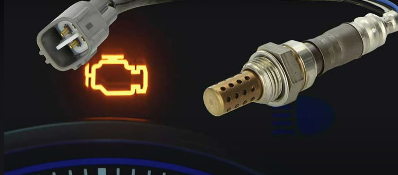Check Emission System” is a warning message that may appear on a vehicle’s dashboard. It suggests an issue with the car’s emissions system, which could have serious detrimental effects on both the environment and the car’s performance.
The emissions control system is in charge of controlling and reducing the number of dangerous pollutants that are discharged into the atmosphere by the vehicle’s engine. It consists of components such as the catalytic converter, oxygen sensors, and exhaust gas recirculation valve. If any of these components are not functioning correctly, the vehicle’s emissions can exceed the legal limits, which can incur fines and penalties for the owner.
To fix the “Check Emission System” warning, the vehicle should be taken to a certified mechanic or dealership.
They will employ diagnostic instruments to determine and pinpoint the precise and perform any necessary repairs or changes to have the emissions system functioning correctly again.
Ignoring the warning could further harm the vehicle and increase emissions, damaging the environment and potentially resulting in even higher fines and penalties.
Meaning And Fix For, Check Emission System Honda pilot?
The fact that your car may fail an emissions test, which is required in many states as part of the vehicle registration procedure, is another significant component of the “Check Emission System” warning light.
You must correct the issue and have your car retested if it fails an emissions test because the emissions control system is malfunctioning before it can be registered. It’s crucial to take care of any problems with the emissions control system as soon as possible because the repair costs in some situations can be high.
In some situations, an issue with the emissions control system might also make your car run less efficiently, leading to poor fuel efficiency and increased maintenance costs.

Overview Check Emission System Honda Pilot?
If your Check Emission System warning light comes on in your Honda Pilot, it means that there is an issue with the vehicle’s emissions control system. It can be brought about by several issues, from a loose gas cap to a faulty oxygen sensor.Here are the actions you can take to solve this issue:
- Check the gas cap – Ensure the gas cap is tightened all the way. , it can cause the warning light to come on if the cap isn’t tight.
- Look up the diagnostic trouble code (DTC) – You can use an OBD-II scanner to read the DTC and identify the particular issue causing the warning light.
- It will give you a clearer idea of what needs to be fixed.
- Fix the problem – Depending on the DTC, you might need to replace a defective sensor or repair a damaged component. Getting your vehicle to a certified Honda technician for diagnosis and repair is recommended.
- Reset the warning light – Once the issue has been addressed, the warning light should go out automatically after the problem has been resolved. However, if it doesn’t, you should use an OBD-II scanner to clear the code and reset the warning light.
It’s crucial to take care of any issues with your car’s emissions control system right away to prevent further damage and ensure that your vehicle is running correctly.
What Does Check Emission System Mean On A Honda Pilot?
When the “Check Emission System” warning light appears on your Honda Pilot, it means that there is an issue with the vehicle’s emissions control system.
The emissions control system minimizes the number of pollutants released into the atmosphere by your vehicle. When this system is not working correctly, it might result in higher emissions and less efficient fuel consumption.
The exhaust gas recirculation (EGR) valve, oxygen sensors, and catalytic converter are just a few of the numerous parts of the emissions control system. The “Check Emission System” warning light may illuminate if any of these parts malfunction or fail.
It’s crucial to take care of any issues with your vehicle’s emissions control system as soon as possible to stop further damage and ensure that your car is operating efficiently. Taking your vehicle to a certified Honda technician for diagnosis and repair is recommended to address the issue correctly.
Meaning And Fix For, Check Emission System Honda Pilot?
A malfunction with the Honda Pilot’s evaporative emission control system is yet another probable cause of the “Check Emission System” alert (EVAP). The EVAP system is intended to stop the atmospheric discharge of gasoline vapors.
The notification may appear if there is a leak in the EVAP system. A loose or damaged gas cap is a typical reason for an EVAP leak. Fuel vapors could escape from a damaged or improperly tightened gas cap, setting off the warning signal.
Make sure the gas cap is securely fastened before trying to remedy the issue. Try tightening the gas cap if it’s loose to see if the warning message goes away. Whenever a gas cap is harmed, replace it with a new one.
If the gas cap is not the problem, then a qualified mechanic will need to diagnose the issue. They may use a diagnostic tool to identify the specific fault code and then test the EVAP system to locate the leak. Depending on the issue, the mechanic may need to repair or replace components of the EVAP system, such as the purge valve, canister, or hoses.

How To Fix Honda Pilot Emissions System Problem?
The steps to fix a Honda Pilot emissions system problem will determine the exact issue causing the “Check Emission System” warning light to turn on. Here are some general steps that you can follow:
- Inspect the gas cap – A loose gas cap may illuminate the “Check Emission System” warning light to turn on. Make sure that the gas cap is tightened properly.
- Look up the diagnostic trouble code (DTC) – Use an OBD-II scanner to read the DTC and determine the specific issue causing the warning light. It will give you a better idea of what needs to be repaired.
- If the DTC indicates that a sensor is, such as an oxygen sensor or a catalytic converter monitor sensor, you may need to replace it.
- Repair a damaged component – If an element of the emissions control system is damaged, including a cracked hose or a damaged EGR valve, you will need to repair or replace it.
- Clear the DTC and reset the warning light – Once the problem has been resolved, use an OBD-II scanner to clear the DTC and reset the warning light.
It’s necessary to take your vehicle to a trained Honda technician for diagnosis and repair to address the problem appropriately. They will be equipped with the essential tools and expertise to locate and fix the issue with your emissions system.
Can You Drive With Check Emission Light On?
If the “Check Emission System” warning light comes on in your Honda Pilot, I recommend fixing the issue immediately.
Although you can technically still drive the vehicle with the warning light on, it’s not recommended to do so for an extended period. Here are a few reasons why:
- Decreased fuel efficiency – When the emissions control system isn’t working correctly, it can cause the engine to run less efficiently. The fuel economy may suffer.
- Higher emissions – A malfunctioning emissions control system can cause your vehicle to produce more pollutants than it usually would. It can harm the environment and may result in your car failing an emissions test.
- Additional damage – If left unaddressed, an issue with the emissions system can cause further damage to other vehicle components. This can result in more expensive repairs down the road.
While you technically can drive with the “Check Emission System” warning light on, it’s not advised to do so for an extended period. Removing the issue immediately is best to stop more damage and ensure that your vehicle runs effectively.
How Much Does It Cost To Fix Emission System?
The cost of repairing an emission system can vary based on several variables, such as the make and model of the vehicle, the severity of the damage or problem with the emission system, the location where the repair is performed, and the labor costs of the mechanic or auto shop.
Typically, fixing an emission system can cost anywhere from a few hundred dollars to a few thousand dollars, depending on the degree of the repairs needed. For instance, replacing a faulty oxygen sensor may cost a few hundred dollars, while replacing a catalytic converter could cost over a thousand dollars.
It is significant to note that emission system repairs are required by law to pass vehicle emissions tests, so it is essential to address any issues promptly to avoid potential fines or legal consequences.
How Long Can I Drive With Check Emission System?
The reason is that the check engine light can indicate a wide range of potential problems with your vehicle, including issues with the emission system, which can lead to decreased fuel efficiency, poor engine performance, and possible damage to your engine or other components the vehicle over time.
Driving with the check engine light on can also result in emissions that don’t meet the required standards, which could cause harm to the environment.
Depending on where you live, driving with a check engine light on might prevent you from passing emissions testing, which could result in other consequences or other penalties.
If you notice the check engine light, I will advise you to have your car diagnosed and fixed as soon as possible.
Conclusion.
When your vehicle’s “Check Emission System” warning light comes on, there might be an issue with the emissions control system. The emissions control system is in charge of limiting the number of pollutants that your car’s exhaust system releases into the atmosphere.
The warning light could come on for several reasons, such as a broken oxygen sensor, a damaged catalytic converter, a broken EGR valve, or an issue with the engine’s computer.
If the “Check Emission System” warning light is on, I will advise you to take your car in as soon as possible for a professional inspection.
Ignoring the warning light could cause further damage to your vehicle and result in more costly repairs in the future.
A mechanic can use diagnostic equipment to identify the root cause of the issue and recommend the necessary repairs. Proper maintenance of your vehicle’s emissions control system can help to reduce pollution, improve fuel efficiency, and extend the life of your car.
